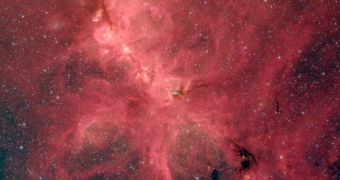The Cat's Paw Nebula, whose more official name is NGC 6334, is now going through a “baby boom,” said Sarah Willis of the Harvard-Smithsonian Center for Astrophysics and Iowa State University while speaking at a meeting of the American Astronomical Society this May 5.
Sarah Willis explained that, despite its popularity, the Orion Nebula is put to shame by the Cat's Paw Nebula as far as the ability to form stars goes.
This is because the latter contains enough material to roll out about 200,000 suns. As of recently, the nebula seems to have picked up the pace and started forming even more stars than it usually does.
As Sarah Willis put it, “NGC 6334 is forming stars at a more rapid pace than Orion - so rapidly that it appears to be undergoing what might be called a burst of star formation.”
“It might resemble a 'mini-starburst,' similar to a scaled-down version of the spectacular bursts sometimes seen in other galaxies.”
Scientists studying the Cat's Paw Nebula are presently unable to say what has triggered its so-called baby boom.
The nebula is located at a distance of about 5,500 light-years away from our planet.

 14 DAY TRIAL //
14 DAY TRIAL //